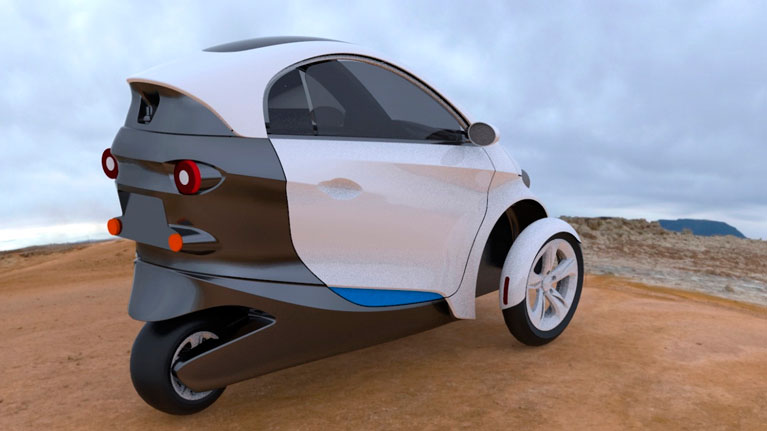A new concept for electric vehicles
IK4-TEKNIKER will develop a new, more efficient magnet-free motor, a perfect solution for traction motors currently available in the market.

Pollution and traffic jams are the two main problems as regards quality of life and health in cities. This is the reason why a process involving the progressive electrification of vehicles is considered to be an efficient alternative to properly address these two major concerns.
It is within this particular context that the WEEVIL project comes to the forefront. Coordinated by IK4-TEKNIKER, it was included in the European project Horizon 2020 to develop a new three-wheel urban encapsulated electric vehicle featuring a “tadpole” configuration (i.e., two wheels at the front one at the back). As listed hereunder, this prototype represents a qualitative leap as:
- It is safe and very light thanks to an innovative structure made of “low cost” reinforced fibres.
- It has been fitted with a width adaptation mechanism so that it can be parked or driven in limited spaces and provide more stability when driven faster.
- It features a new efficient magnet-free motor.
- It has interchangeable batteries.
- It is elegantly designed and highly ergonomic.
There are currently two electric vehicle alternatives in the market: the most widespread category (M) and L (motorcars with less than four wheels and lightweight quadricycles). Although attractive, they are somewhat flawed as regards traffic jams, safety and comfort.
The challenge for IK4-TEKNIKER consists in developing a new efficient motor without permanent magnets. Based on a highly compact design, this motor integrates its three main elements in only one component, i.e., the electric machine, the gearbox and the electronic converter designed by Fagor Automation. The converter’s high performance control algorithm will also be developed at IK4-TEKNIKER. In the past, the technology centre also played a leadership role in another European project called VENUS that developed a motor for a commercial electric vehicle. It also studied its many pros and cons and potential industrialisation possibilities.
Motors equipped with rare earth magnets are the ones most commonly used aboard electric vehicles due to their power density features. The shortage, however, of certain rare earth materials required for production purposes in addition to export tariffs applied by producing countries have made things far more difficult for Europe. It has been estimated that about 95% of the world’s extraction operations involving these minerals are located in China and it is feared that the Chinese authorities will curtail exports as was the case in 2010.
This is why technologies based on magnetic reluctance have been rated as an optimum alternative for traction motors. These motors are not only magnet-free, but can also deliver higher speed ratios. This means that transmissions can be made simpler and that cost reductions will be achieved. The motor developed within the scope of the WEEVIL project is characterised by three major developments:
- The configuration of the electric machine has been modified to significantly enhance motor operation and simplify its manufacturing process.
- An ad hoc approach has been applied to electronics with a geometry adapted to the machine itself to achieve a compact motor design as well as a distributed pole configuration that, among other things, allows for the minimisation of electronic components.
- The gearbox between the motor and the wheel is integrated in the motor.
Under the IK4-TEKNIKER leadership, the WEEVIL project has been allocated budget of just under 6.3 million de euros and several major leading industrial companies are currently involved.
